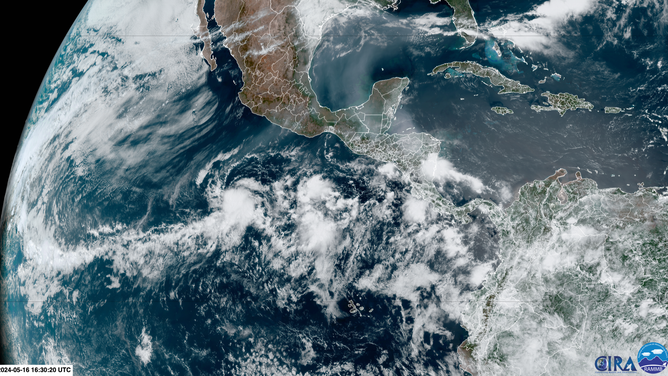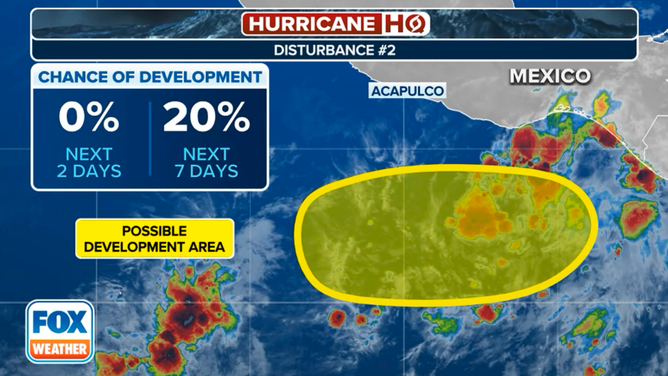Eastern Pacific hurricane season kicks off with forecasters monitoring 2 areas of disturbed weather
Hurricane season in the Eastern Pacific Ocean began May 15.
Eastern Pacific awakens as forecasters monitor 2 tropical threats
The National Hurricane Center (NHC) is now tracking two systems in the Eastern Pacific Ocean that have low chances of development over the next week.
The National Hurricane Center (NHC) is now tracking two systems in the Eastern Pacific Ocean that have low chances of development over the next week.
This comes just days after the official start of the Eastern Pacific hurricane season on May 15.

This satellite image shows two systems being monitored by the National Hurricane Center in the Eastern Pacific Ocean on Thursday, May 16, 2024.
(NOAA / NOAA)
"Development of this system, if any, should be slow to occur as the disturbance moves slowly westward during the next few days," the NHC wrote in its outlook.
EVERYTHING YOU NEED TO KNOW ABOUT THE 2024 EASTERN PACIFIC HURRICANE SEASON

The outlook for Disturbance No. 1 in the Eastern Pacific Ocean.
(FOX Weather)
On Thursday afternoon, the NHC said it was also monitoring a second system that could develop nearby.
Forecasters said satellite data showed a small area of low pressure located several hundred miles off the southwestern coast of Mexico that had been producing some disorganized showers and thunderstorms.
The NHC said that by this weekend, it's expected to merge with the other disturbance to its east, which would reduce development chances.
"While environmental conditions appear only marginally favorable due to nearby dry air, some development of this system is possible during the next day or so as the low remains nearly stationary," forecasters noted.

The outlook for Disturbance No. 2 in the Eastern Pacific Ocean.
(FOX Weather)
Eastern Pacific season begins earlier than Atlantic
The arrival of the systems is on schedule with the official start of the Eastern Pacific hurricane season, which officially began Wednesday.
The Atlantic season officially begins June 1, and it's expected to be an extremely active one.
Meanwhile, Mexico’s national weather service said last week that an average season is expected in the Eastern Pacific, with 15-18 named storms. Between seven and nine of those storms are expected to become hurricanes, with a few of those becoming major hurricanes.
The first named storm in the Eastern Pacific will be Aletta.
In 2023, the names of Dora and Otis were retired from the Eastern Pacific naming list after the storms were connected to devastation in Hawaii and Acapulco, Mexico.
